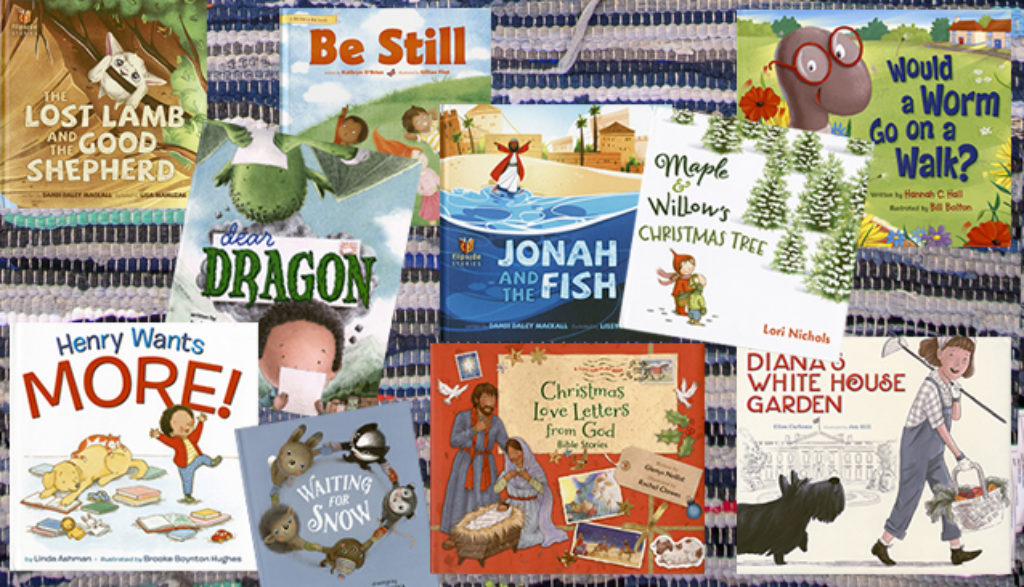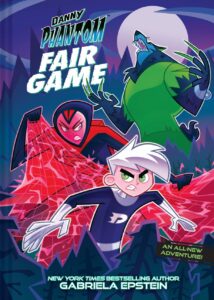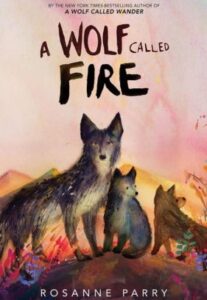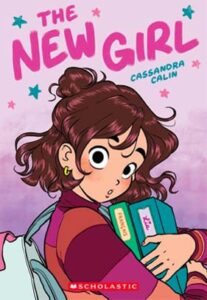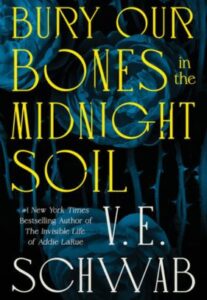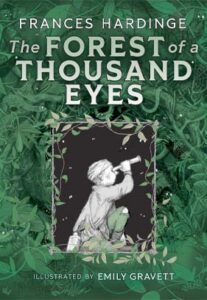Listed in alphabetical order:
Be Still
by Kathryn O’Brien (author); Gillian Flint (illustrator); published by Tyndale Kids, a trademark by Tyndale House Publishers Inc.
Summary: On a backdrop of soft watercolor drawings, the narrator (God) breaks down Psalm 46:10. Using short, simple sentences, He defines what it means to be still. He elaborates, urging kids to be still and know Him, His joy, His grace and His Word. He tells them to be still and know that they are safe and loved and always on His mind. He reminds them to be still and know that I am God, a God who is powerful, wise, gentle and loving. The illustrations show children playing in a meadow, enjoying each other and the beauty of nature.
Christian beliefs: Based on Psalm 46:10, the book focuses on the joy that comes from knowing and trusting a loving God.
Authority roles: God, the narrator, offers numerous assurances of His love and provision.
Christmas Love Letters from God
by Glenys Nellist (author); Rachel Clowes (illustrator); published by Zonderkidz, a trademark of Zondervan
Summary: Hundreds of years before Jesus’ birth, Isaiah got a message from God about a special baby. Colorful sketches show Isaiah proclaiming this news to his happy neighbors. Then the pages show Mary and Joseph, perplexed but obedient when visited by angels. The couple travels to Bethlehem, Jesus is born and shepherds and wise men receive God’s message to go visit the baby. At the end of each chapter, a folded notecard bears a letter from God for the readers. He reminds them that Jesus was His gift to everyone and that He will go with them and help them when they trust in Him. A blank notecard appears at the end of the book, and readers are invited to write their own letter back to God.
Christian beliefs: Short passages of Scriptures appear at the end of each chapter in this retelling of the account of Jesus’ birth.
Authority roles: God, through His angelic messengers, shares His love and joyful news with characters from the Bible and children reading this story.
Dear Dragon
by Josh Funk (author); Rodolfo Montalvo (illustrator); published by Viking, a trademark of Penguin Young Readers Group
Summary: George Slair is a little boy. Blaise Dragomir is a young dragon. Their teachers set up a pen-pal program, stipulating that the students must write to each other in rhyme. George assumes his new pen pal is human, and Blaise believes George is a dragon. When they read each other’s letters, colorful sketches show them envisioning a boy/dragon of their own species. When Blaise talks about his skydiving, George envisions a human boy in goggles and a parachute. The opposite page shows what Blaise is actually doing, flying through the sky using his own wings. The boys write each other about their pets, hobbies, toys and parents. The mental pictures each boy generates of his friend are always quite different from reality. Children from both classes are shocked when they meet face to face at their pen-pal picnic. After an awkward moment of clarity, George and Blaise begin playing together like old friends.
Christian beliefs: None
Authority roles: George’s and Blaise’s teachers set up the pen-pal project and a picnic to help their students meet new kinds of friends.
Diana’s White House Garden
by Elisa Carbone (author); Jen Hill (illustrator); published by Viking, a trademark of Penguin Young Readers Group, an imprint of Penguin Random House LLC
Summary: Based on true events, 10-year-old Diana Hopkins’ story takes place in 1943. She lives in the White House, where her father is President Roosevelt’s chief adviser. Pencil sketches with patches of muted color show people everywhere finding ways to support the war effort. All of Diana’s attempts to be useful end up getting her into trouble. As she sits with her father in the president’s office, Roosevelt shares his new plan. He wants to urge citizens to plant Victory gardens. If people will grow their own food, he says, the country can use the food farmers grow to keep the troops strong and healthy. The president says his wife plans to plant a Victory garden on the White House lawn, and Diana eagerly offers to help. Diana, Mrs. Roosevelt and the groundskeeper carefully plant and tend to the new garden. Fala, the White House dog, helps keep rabbits from stealing their produce. Reporters come and photograph Diana and the Victory garden. The girl is pleased to see her picture in the paper and realizes she’s played an important part in supporting the war effort.
Christian beliefs: None
Authority roles: President and Mrs. Roosevelt treat Diana kindly and invite her to be the face of their new campaign to help America.
Henry Wants More!
by Linda Ashman (author); Brooke Boynton Hughes (illustrator); published by Random House Children’s Books, a division of Penguin Random House LLC
Summary: Henry is a curly-haired toddler who loves his family’s attention. No matter how many times Papa swings him around, he wants more. He makes Grandma play her piano song over and over. His sister, Lucy, plays every game she knows with him. Still, he wants more. Henry’s brother, Charlie, pulls him in the wagon. His siblings play and tickle and sing and race, and Henry pleads for them to do it again. At Henry’s request, a bleary-eyed Mama reads several more books than she had intended at bedtime. When Henry is finally asleep, the family members are relieved that they can rest. Yet, after tucking him into bed, they go back for another loving look. They want more of Henry.
Christian beliefs: None
Authority roles: Loving, attentive parents, older siblings and Grandma play with the energetic Henry, even after he’s worn them out.
Jonah and the Fish
by Dandi Daley Mackall (author); Lissy Marlin (illustrator); published by Tyndale Kids, a trademark of Tyndale House Publishers Inc
Summary: This book includes two stories in one. Jonah shares his experience running from God’s command and boarding a ship to Tarshish. A great storm comes up. Jonah recognizes he is the problem and urges the sailors to throw him overboard. After being swallowed by a huge fish, he agrees to obey God. The fish spits him out on land. When readers flip the book over, they hear the fish’s account. He always hoped for a chance to do a big deed for his Creator, so he obeys God’s strange command to swallow Jonah. He’s equally obedient about spitting Jonah onto land when God asks. He feels happy he’s done something to serve his Creator, and he hopes Jonah was able to tell the people of Nineveh about God.
Christian beliefs: Jonah 4:10-11 appears in this text, which delivers dual retellings of the biblical account of Jonah.
Authority roles: God tells one of his sea creatures how to participate in His plan. He teaches Jonah a needed lesson.
The Lost Lamb and the Good Shepherd
by Dandi Daley Mackall (author); Lisa Manuzak (illustrator); published by Tyndale Kids, a trademark of Tyndale House Publishers Inc.
Summary: This book includes two stories in one. A big-eyed lost lamb tells his side of the story, explaining in rhyme how he dreamed of wandering off into distant green pastures. He becomes scared when faced with thunder, spooky animal sounds and his own growling stomach. When he falls down the side of a cliff and hangs precariously from a branch, he wonders if his Good Shepherd will even come after him. After all, He does have 99 other sheep. But the Shepherd hunts for him, saves him and carries him home. Flip the book over, and the Good Shepherd narrates an alternate story. He talks about how much He cares about each sheep, and how He grows concerned when He sees one is missing. The worried Shepherd hunts far and wide until He finds the lamb hanging from a branch. He saves and comforts the sheep and promises never to let him go.
Christian beliefs: This Bible parable is retold two ways. The text includes Luke 15:6, which tells how the Shepherd rejoices when His lost sheep is found.
Authority roles: The Good Shepherd makes every sheep a priority. He vows to stop at nothing to find His lost lamb.
Maple and Willow’s Christmas Tree
by Lori Nichols (author/illustrator); published Nancy Paulsen Books, an imprint of Penguin Young Readers Group and Penguin Random House LLC
Summary: Sisters Willow and Maple love winter. They enthusiastically prepare for Christmas by stringing lights and baking cookies. They’re especially excited because this year they get a real tree. After scouring the forest, they find the perfect one. Once the tree is set up in the house, however, Maple begins to sneeze. She can’t stop sneezing in the house, although she’s fine when they play outdoors. The tree is moved outside. Maple apologizes to Willow for being allergic to the tree and ruining Christmas. Willow’s frustration with her sister is evident. Later that night, Willow feels bad about hurting Maple’s feelings. She sneaks downstairs and decorates a ladder with bright lights and Christmas balls. Both girls both think it looks perfect.
Christian beliefs: None
Authority roles: Parents are pictured driving the girls to the forest to get a tree.
Waiting for Snow
*by Marsha Diane Arnold (author); Renata Liwska (illustrator); published by Houghton Mifflin Harcourt Publishing Company
Summary: Badger is ready for snow. His friend, Hedgehog, reminds him snow will come when the time is right. Badger is impatient, though, and decides to wake up the sky on his own. He bangs on pots and pans, causing his alarmed friends Rabbit, Vole and Possum to come running. They join him in throwing rocks at the sky to poke holes for the snow to fall through. They do a snow dance. Badger even wears his pajamas backward to bring snow. Hedgehog gently reminds him about the consistency of night and day and the seasons. Everything comes in its time. Soft, whimsical pencil sketches show the friends knitting, playing games and resting together as they wait for snow. It finally comes.
Christian beliefs: None
Authority roles: None
Would a Worm Go on a Walk?
by Hannah C. Hall (author); Bill Bolton (illustrator); published WorthyKids/Ideals, an imprint of Worthy Publishing Group, a division of Worthy Media Inc.
Summary: In playful rhyme, the narrator imagines what would happen if worms tried to walk in tennis shoes. He wonders how it would look if pigs played piano, or ladybugs wore lipstick, or rhinos wore raincoats. Bright illustrations depict other silly scenarios as well: Could a lion be a lifeguard? Could penguins use a parachute, possums polka or turtles drive trucks? He concludes that every creature was made unique and special by a wise Creator and that each was designed to be unique. The narrator then turns to the reader to tell the child that he or she is God’s masterpiece.
Christian beliefs: Readers are reminded of God’s perfect and unique purpose for each creature. Genesis 1:31 notes that God saw that all He had made was very good.
Authority roles: None



